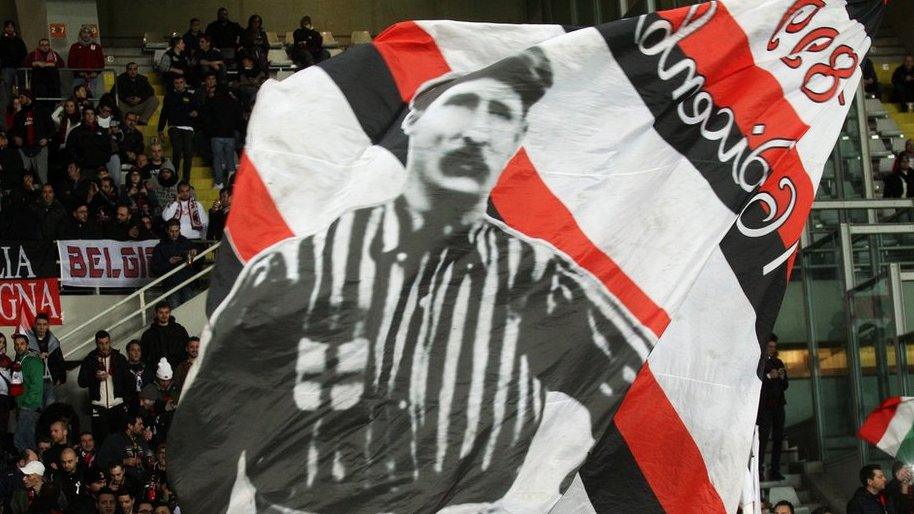Herbert Kilpin: Plaque for Nottingham-born AC Milan founder
- Published
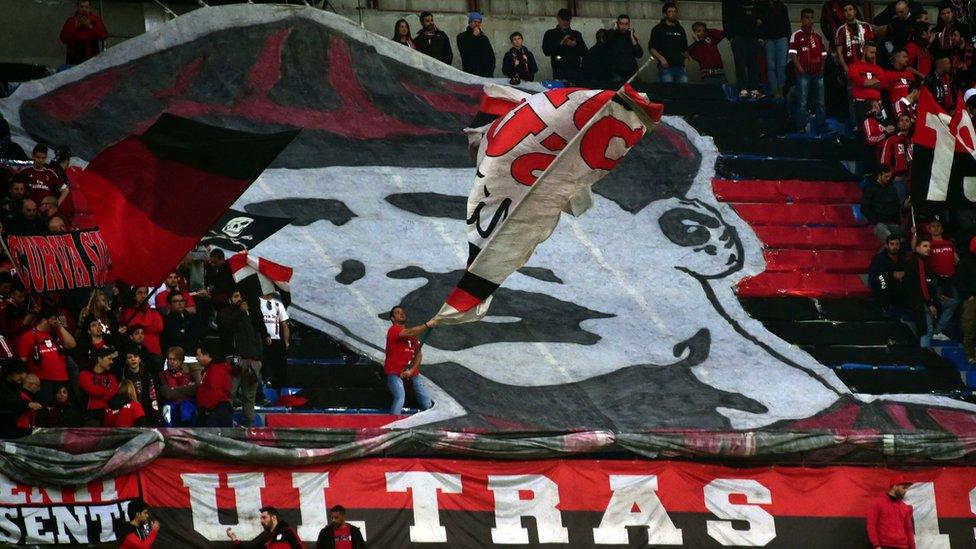
Herbert Kilpin's image still appears on AC Milan flags and banners
A plaque is set to be unveiled in memory of the Englishman credited with founding Italian football giants AC Milan.
Herbert Kilpin, from Nottingham, went to work in Italy in the 1890s and later established the Milan Football and Cricket Club.
The plaque is being unveiled to mark 100 years since his death.
However, fundraisers have yet to get permission to attach the plaque to Kilpin's birthplace.
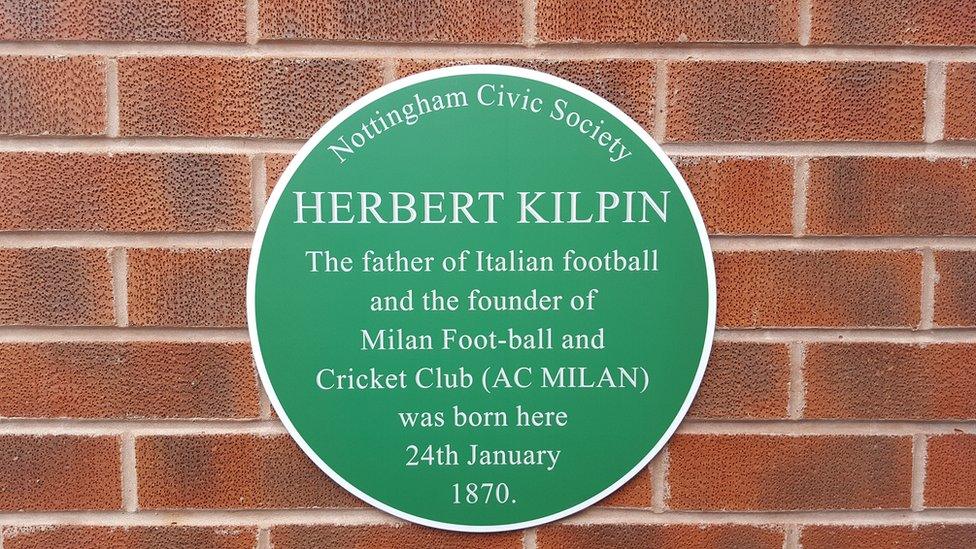
The plaque will be unveiled by the Sheriff of Nottingham and a great niece of Herbert Kilpin
Kilpin, who was born at the back of a butcher's shop on Mansfield Road, led the club to their first three championships.
He is known as the "father of Italian football" in Milan and there has been a recent drive to have his achievements recognised in his home city of Nottingham.
Andy Black, one of the fundraisers behind the project, said: "It is no secret what Herbert Kilpin achieved, but he has just been overlooked.
"I located the birthplace, it is a very run down building.
"It is the complete opposite end of the scale to the San Siro [AC Milan's stadium]."
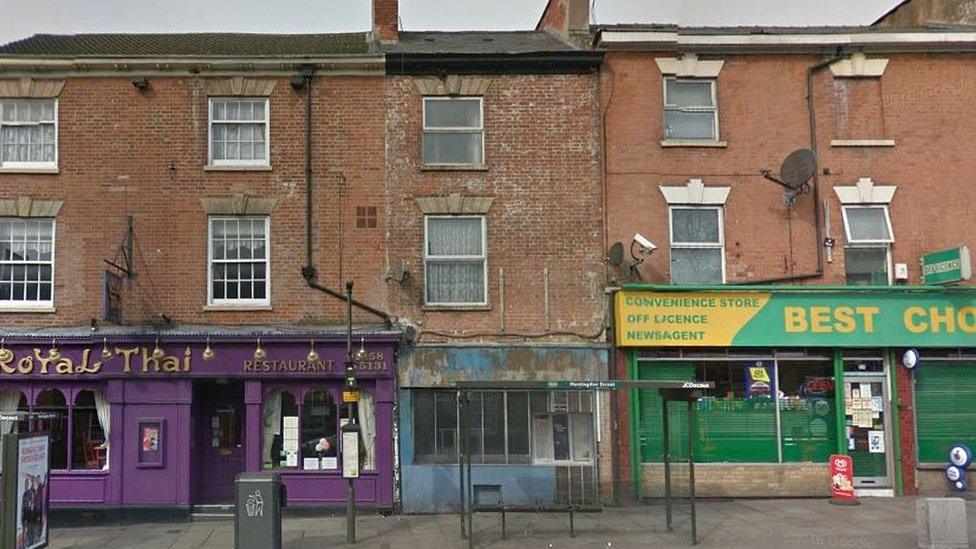
It is hoped the plaque can eventually be placed on the house (centre) Herbert Kilpin grew up
However, fundraisers have said contacting the owners of the building where the footballer was born has proved difficult so the plaque will not go on display until permission is granted.
Despite this setback, the group did not want the 100th anniversary of Kilpin's death to go unmarked.
A bus and bus stop carrying Kilpin's name are also being unveiled by the Sherriff of Nottingham.
Robert Nieri, another of the fundraisers, will be at the San Siro stadium as a guest of AC Milan to watch their game against Juventus.
He has written a book about Kilpin and has started working on a documentary., external

The Italian launch of Robert Nieri's (holding microphone) book about Herbert Kilpin took place at the club's Casa Milan headquarters

The 'Lord of Milan'
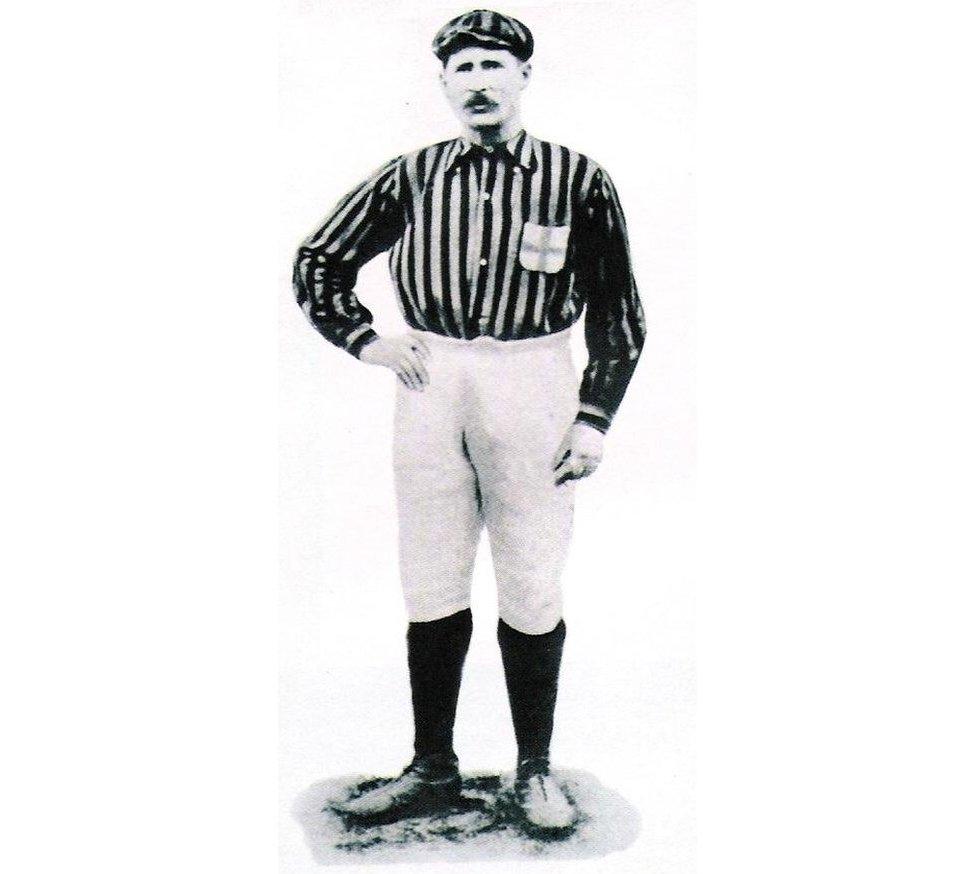
Kilpin is known to AC Milan's fans as "The Lord of Milan"
He designed the club's famous red and black shirts
He played football until 43, despite being a heavy smoker and drinking whisky before, during and after matches
Kilpin died in obscurity in 1916 and his grave was believed to be lost until a historian tracked it down
AC Milan paid for his new tombstone and he was reburied in the city's Monumental Cemetery in 1999
Source: The Lord of Milan, external

- Published8 October 2016
